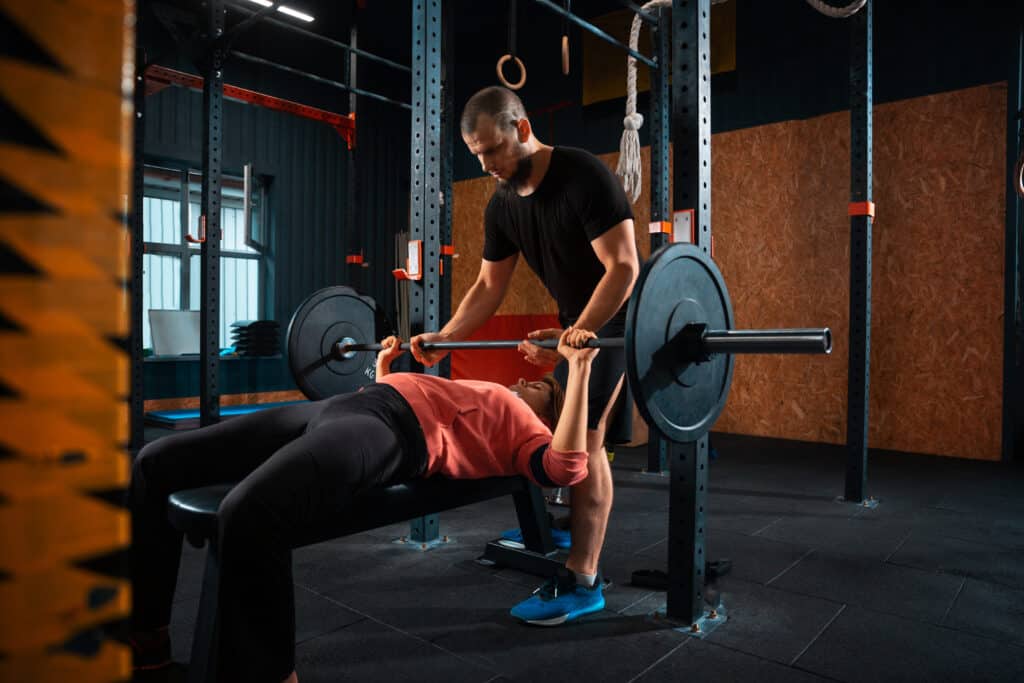You can expect to lose about half-a-pound of muscle per year beginning around age forty. It may not sound like much. But it’s about a five pound loss of metabolically active muscle tissue each decade. Keep in mind, this will be different for each person due to genetics, hormonal changes and activity level. We know someone can offset the loss of muscle by hitting the gym regularly doing strength training. Performing two to four weekly training sessions has been shown to mitigate this loss, known as sarcopenia.
Why it’s Important to Maintain Muscle as You Age
A sedentary individual begins lose muscle mass around the fourth decade of life, as previously mentioned. As a result, ten pounds of muscle can be lost by the time that person starts thinking about retirement (age 60). Why is it important to prevent sarcopenia? One reason is because muscle is more metabolically active compared to fat tissue. You burn three times more calories per pound of muscle, compare to each pound of fat. Fat, also known as adipose tissue, takes up more space on the body compared to muscle, which is more dense. These are just a few reasons why you need to maintain muscle as you age; and the only way to do that is with strength training!
As someone begins to age, they can be eating the same amount of calories but have trouble maintaining their bodyweight. This is because their body is not as efficient (as it once was) at burning calories because the ratio of muscle to fat has changed. The bodyweight may stay constant, but there is now less muscle mass with a higher percentage of body fat.
It is also important to maintain muscle to stay both functional and independent as one ages. These are just a few reasons why you should exercise regularly and maintain strength training until the day you die.
How Much Strength Training do You Really Need?
The amount of strength training required is dependent on individual goals. In order to build muscle mass, you should to hit the gym a minimum of 2-4 times a week. Rest 24-48 hours between training sessions. The idea idea is to target all major muscle groups, using 3 sets of 8-12 repetitions to get started. The resistance should be challenging enough to perform only the number of repetitions in the range previously mentioned. This can change slightly depending on individual goals. Once someone has been lifting about 3-6 months, the number of gym visits could be reduced to 1-2 times a week to maintain strength gains.
How Much Weight Should You Lift?
The amount of weight lifted depends on individual goals. Generally speaking, 65-85 percent of the most weight you can lift for each exercise is a good goal. This is known as 1-RM or one repetition maximum. For example, schedule a test day on Day 1 when getting started. Perform a series of exercises targeting your major muscle groups. This could look something like following:
Perform a specific number of sets, using adequate rest between sets, before reaching your final set for one repetition. All previous sets can be performed higher repetitions to warm-up the involved muscle groups. In terms of a repetition sequence for testing, it could look something like this: 1×10, 1×8, 1×6, 1×4, 1×1 – where each subsequent set includes more weight, resting a few minutes between sets. This is just one of many different examples to try.
Final Thoughts
Hopefully this information will help you get started on your strength training journey. A second option for testing is the Jefit body weight assessment. This can be found on Jefit app under the “profile tab”. In the middle of the page you can click Jefit Assessment and read the directions.
Stay Strong Together
Jefit, named best strength training app by Sports Illustrated, Esquire, GQ, Men’s Health, Greatest, Forbes Health, and many others. We offer a community responsible for 92,000,000 workouts to date! The app, with more than 10 million downloads, comes equipped with a customizable workout planner and training log. The app also has ability to track data, offer audio coaching cues, and can share workouts with friends. Visit our members-only Facebook group. Connect with like-minded people, share tips, and advice to help get closer to reaching your fitness goals.
Read the scientific paper published in the Journal of Medical Internet Research using the Jefit app. Also, a great Jefit app review was published by MUO that can be found here.
- Top Hip & Back Extension Exercises for Posterior Chain Power - April 23, 2025
- Best Exercises to Build Strong & Defined Shoulder Muscles - April 21, 2025
- Whey vs. Casein: What’s the Best Protein for Building Muscle - April 18, 2025
